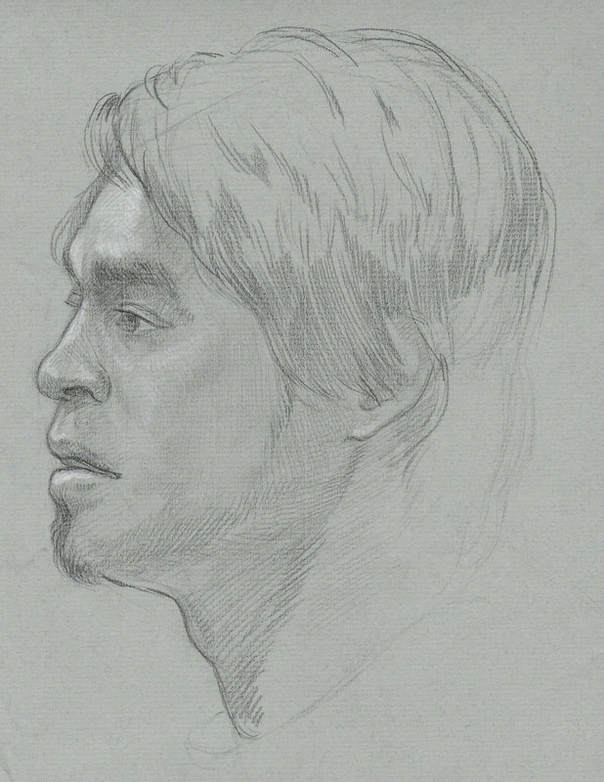Portrait Drawing: Beginners to Advanced
Have you ever wanted to draw someone's portrait?
This introduction to the art of portraiture aims to expand your understanding of the portrait beyond that of a well observed and static reproduction of the human head, by conceiving of the human head within the context of portraiture conventions, as an integrated part of the human body and as a vehicle for emotional expression. This course is suitable for both beginners and those with some drawing experience.
COURSE OUTLINE
- Week 1: Discuss the proportions of the human head and the anatomy of the skull, including the relationship of the head to the neck and upper torso. We will note the importance of initially demarcating the position of the ear (or the external acoustic metus of the skull) when the head is drawn in profile. The features of the face will be seen within the context of conceptualising the head in terms of a simplified overarching egg shape.
- Week 2: The convention of the open mouth. The model will be asked to breathe through their mouth while posing, allowing the student to convey a sense of the living sitter breathing or about to speak. The use of this artistic convention by such Masters as Caravaggio, Bernini and Rembrandt, will be addressed within the class.
- Week 3: The foreshortened head. The model will be asked to stand and the student will draw the head as seen from below. The importance of the under planes of the head will be addressed.
- Week 4: The body in portraiture. This class will begin to integrate the process of perceiving the head as integral to the figure as a whole, both in terms of bodily action and emotional expression within portraiture. We will look at the convention of the waist high portrait as seen in the works of Leonardo da Vinci and the Venetian painter Titian. The use of geometric shapes to frame the pose, such as the triangle, will be examined.
- Week 5: Drawing the passions. We will look at the French painter, Charles le Brun’s understanding of facial expressions and how bodily actions are used to convey emotion. A model with a background in performance will seek to embody a range of emotional states through their facial expressions and bodily actions. The muscular anatomy of the human head as it relates to expression will also be addressed.
- Week 6 and 7: The full figure portrait. Looking at portraiture conventions that relate to the figure as a whole, we will consider how the gesture of the whole body is employed to convey the character of the person in the works of the Eighteenth-Century English portraitists Joshua Reynolds and Thomas Gainsborough. We will also introduce props and objects as further tools in conveying the character of the sitter.
PLANNED LEARNING OUTCOMES
By the end of this course, students will be able to:
- Conceive of the head and the features of the face in terms of basic overarching geometric masses.
- Gain a basic knowledge of the anatomy of the skull and the muscles of the head, neck and parts of the upper torso.
- Observe and conceptualise the relationship between facial physiognomy and conveying human emotion within a portrait.
- Gaining practical and applicable knowledge of art historical conventions for portraiture.
- Understand the interrelationship of the body to the head in portraiture.
MATERIALS LIST
- A range of pencils (Note: hard pencils either H or 2H are recommended for beginners) or charcoal, oil based red and black chalk.
- Kneadable eraser
- Razor blade for sharpening pencils
- Two metal paper clips
- Medium sized sketch book
When:
Tuesday 1 May - 19 June 2018
12.00 PM - 2.00 PM
Where:
WEA Sydney
72 Bathurst Street
Student Feedback:
'I have just completed an 8 week Portraiture Course with Dominique and I can't speak highly enough about him. His classes were well structured, informative and very interesting. I also enjoyed the one-on-one tuition throughout the class. I'm looking forward to doing another course with him next term and others in the future.'
Antonia (Toni) Bellanto
'I have done some courses with WEA and Sydney Community College previously, with different teachers, and although every teacher was good... During [Dominique's] course I’ve learnt much more than I ever did in all the other courses put together.'
Malgorzata (Margaret) de Castillo
